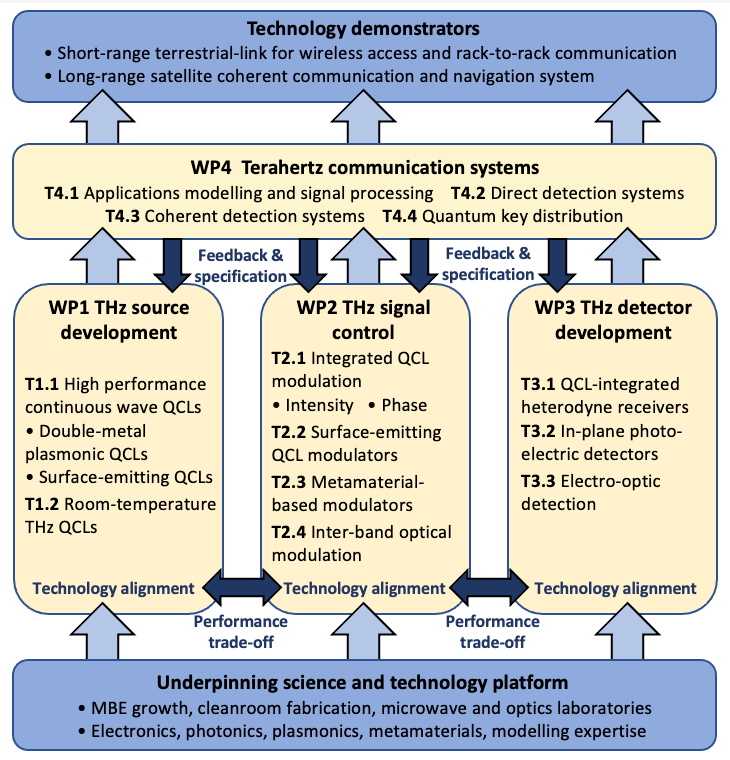High data throughput wireless communication systems are central to our lives, livelihoods, and national security, with recent increases in remote working particularly emphasising the importance of high performance and resilient data communication systems. Data traffic is increasing exponentially, with the fastest-growing part of this increase being on wireless channels, as mobile users increasingly make use of online services. This is unsustainable using state-of-the-art radio frequency and microwave systems, and further compounded by the shortage of allocable electromagnetic spectrum into which current radio frequency and microwave wireless communications can grow.
We aim to develop the first integrated high throughput wireless communication systems operating at carrier frequencies >2 THz, enabling a two orders-of-magnitude increase in data rates over state-of-the-art RF and microwave systems to target system throughputs >1 Tbit/s.
Objective 1:
We will demonstrate wireless communication systems operating in the 2 – 5 THz frequency range with transmission rates >100 Gbit/s using advanced modulation formats encoding multiple bits per symbol, and we will investigate the potential for quantum key distribution (QKD) at these frequencies for future secure communications.
Objective 2:
We will develop edge- and surface-emitting quantum cascade lasers (QCLs) tuned to atmospheric windows, and deliver continuous-wave output powers >100 mW, with beam qualities of M2<1.2, optimize operation at Peltier-cooler temperatures, and demonstrate the first room temperature THz QCL.
Objective 3:
We will develop fast optical and electrical modulation methodologies, including new photonic integrated circuit architectures, enabling independent modulation of intensity (>25:1) and phase (2p) at >10 Gsymbols/s, leading to >100 Gbits/s transmission.
Objective 4:
We will demonstrate direct and heterodyne Schottky barrier detection (SBD) over the 2–5 THz range and at >100 Gbits/s, and demonstrate new amplitude and fully phase-resolved coherent detection, exploring QCL heterodyne receivers, in-plane photoelectric detector arrays and electro-optic detection, that have the potential to surpass significantly the noise figure of SBDs.
Objective 5:
We will train and inspire a diverse cohort of future UK academic and industrial leaders and innovators in a long-term holistic, collaborative, and cross-disciplinary environment, promote outreach and advocacy, and build capability in an area of national shortage.

In the first phase (years 1–3), the Programme comprises four strongly interrelated workpackages, each containing a series of focussed tasks. Target device specifications will be provided from the systems workpackage 4 to the technology workpackages 1–3 with devices evaluated within workpackage 4, driving the innovation cycle.
